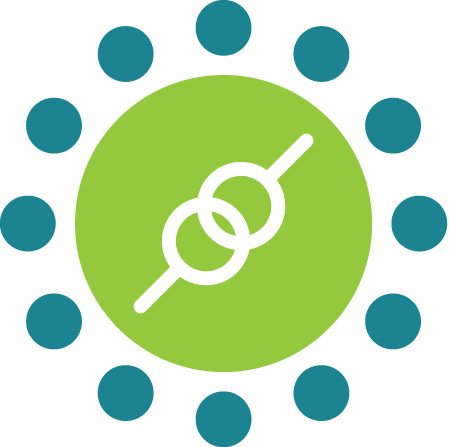How Can A Tester Coordinate Manual And Automated Testing?

 KiwiQA
KiwiQATable of Contents
Most of the software testing companies provide sophisticated functionalities across several platforms and gadgets. Therefore, it becomes almost difficult to manually evaluate every feature of the product in the allotted time.
The frameworks and tools for test automation provide testers with the ability to repeat the necessary tests in a predetermined amount of time while also performing a range of tests. However, no company can completely automate its testing processes. In addition to this, there are a lot of drawbacks to both manual and automated testing. Certain circumstances call for manual testing over automated testing. Because of this, effective coordination of human and automated software testing activities by the test manager is crucial.
Have a look at the following pointers in order to identify the differences between the two types of testing:
These days, it is very rare to come across an IT organization that does not offer a combination of automated and manual testing services. When the two work well together, manual testing and automated testing don’t take away from one another; rather, they build upon one another and provide stronger synergetic testing.
Automated testing often improves testing consistency and speed, but it can only be as effective as the scripts you built. In order to find problems from the viewpoint of the user or unanticipated defects from unplanned situations, etc., manual testing is complementary to automation testing. Along with effective automation, manual testing heuristics are greatly needed.
When you use a combination of these tests to cover various aspects of the same feature, when manual tests pick up where automation left off, or when there are tests that are only “semi-automatic” and require manual intervention between testing in order to move on to the next automation set of tests are some examples of how automated and manual testing can be successfully combined.
As a tester, you can consider the following best practices in order to incorporate both manual and automated testing in your testing process.
A lot of QA testing experts think that automated testing can replace manual testing. However, in practice, automated testing both supports and improves manual testing. Both methods of testing have the same end goal. Additionally, the effectiveness of test cases affects how quickly and consistently software testing tools and frameworks can run tests.
Furthermore, it is impossible to evaluate the programme from the standpoint of end-users using the tools. Therefore, you must convince the testing specialists that manual testing and automated testing are complementary.
The team’s testing activities should be managed and coordinated by one person or a small group. Coordination won’t happen if no one is given the task. In parallel to this, you must establish test management coordination as a common objective and develop it in the same way you would feature any of your products, including setting success metrics to track your progress.
Finally, make sure that the duties involved in testing and test coordination are legitimate and visible to the whole team. Several test management technologies may help with this, but make sure they include cutting-edge shared dashboards and reporting that provide this visibility across tests.
The management might encourage testing specialists to undertake manual testing using tools in addition to automating manual tests. He could even think about correctly integrating manual and automated testing to evaluate multiple elements of a single feature or capability.
When the automation is finished with some of these tests, the manual testers will need to begin their job. The manual testers may also be required to step in between two different sets of semi-automated testing in some cases. The combination will encourage communication and continuous coordination between the members of the manual and automated testing teams. The best practices for test automation should always be followed by specialists in automated testing.
By precisely describing the test cases for automation, the manager may quickly coordinate the manual and automated testing activities. No manager can completely automate software testing. The selection of test cases for automation must take into account crucial factors such as repetitiveness, application complexity, variety in test data, and investment in test automation technologies. While creating the test strategy, the administrators may distinguish clearly between manual and automated testing. The test plan may be referred to by the experts doing the software QA testing to prevent future misunderstandings and confusion.
To meet your testing goals, it is acceptable to employ a variety of tools and platforms. Numerous systems, including bug trackers, automation frameworks, development management, etc., link with one another. The ideal tool to manage the testing process is often not the one you use to run a test (of course, there are exceptions.) Try to centralize management wherever feasible, at the very least the test findings.
Between the manual testing team and the automated testing team, the manager must ensure good communication. Members of these teams will cooperate and work together to achieve the shared goal as a result of the communication. The manager can even think about scheduling daily sharing or update meetings and encouraging both manual and automated testers to collaborate on scheduling and planning the testing operations. The proper coordination of the manual and automated testing operations depends on ongoing communication.
The test manager must ensure that the manual and automated testing teams collaborate and operate in the same environment. The integrated and unified test management platform will improve professional collaboration and coordination.
However, in order to increase test coverage and effectively execute the testing activities, the manager must still choose the appropriate tools. He also has to choose the test management system while taking the test automation technologies that the automated testing team uses into consideration.
Managers must create thorough test strategies that specify which tests should be automated and which should be conducted manually. Determining the kind of manual and automated testing based on test coverage is also crucial. In order to effectively coordinate the human and automated software testing efforts, the manager must plan the complete software testing process in advance.
The management will not be able to determine the value achieved from the automation testing until this most important choice has been made – what type of test must be done, ma Three fundamental elements must be connected to this:
To facilitate better team communication, use consistent names and conventions across your tests. Place “legends” or “explanations” if necessary in key locations, but make sure everyone is “speaking the same language.”
Consider your audience when developing metrics, dashboards, and reports before sharing the data you have worked so hard to gather. Based on their requirements and what they need to know, provide it.
It is completely acceptable to utilise the same results in several metrics or dashboards; doing so might emphasize various aspects of your findings, and certain individuals could connect to particular result representations more easily than others. Always provide a brief, precise explanation or caption of what is being presented in metrics and dashboards since it is almost difficult to make them self-explanatory. When focusing on many dashboards, be particularly cohesive.
Effective management of manual and automated testing is comparable to leading an orchestra, using various instruments, playing various melodies, sometimes at various tempos, and working toward a common objective that is larger than the sum of its parts. Although careful preparation and execution are necessary, the outcomes are often remarkable!
Join the like-minded community & get the latest updates and insights on software testing technological transformation around the globe. Don't miss out.
